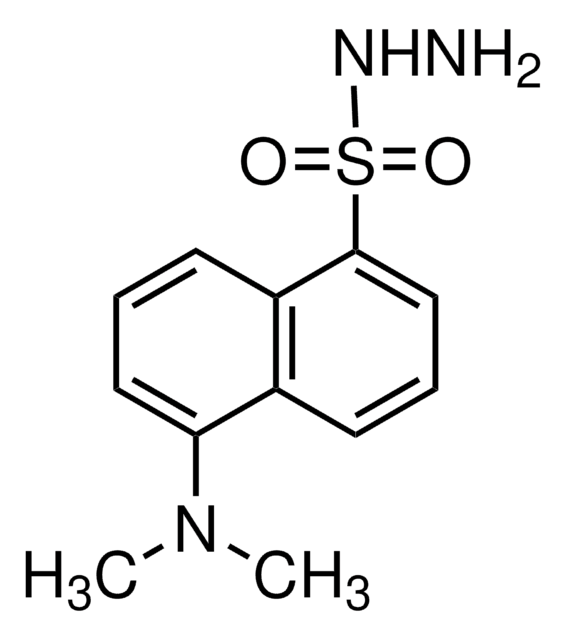40718
Diethyl pyrocarbonate
96% (NT)
Synonim(y):
DEP, DEPC, Diethyl dicarbonate, Diethyl oxydiformate, Ethoxyformic acid anhydride
About This Item
Polecane produkty
Próba
96% (NT)
Postać
liquid
kolor
APHA: ≤20
współczynnik refrakcji
n20/D 1.398 (lit.)
n20/D 1.398
tw
93-94 °C/18 mmHg (lit.)
rozpuszczalność
95% ethanol: 4.5 g/10 mL, clear, colorless
gęstość
1.121 g/mL at 20 °C
1.101 g/mL at 25 °C (lit.)
Warunki transportu
wet ice
temp. przechowywania
2-8°C
ciąg SMILES
CCOC(=O)OC(=O)OCC
InChI
1S/C6H10O5/c1-3-9-5(7)11-6(8)10-4-2/h3-4H2,1-2H3
Klucz InChI
FFYPMLJYZAEMQB-UHFFFAOYSA-N
Szukasz podobnych produktów? Odwiedź Przewodnik dotyczący porównywania produktów
Powiązane kategorie
Opis ogólny
Zastosowanie
- For the modification of histidyl residues in proteins.
- As a nuclease inhibitor, for the extraction of undegraded nucleic acids from etiolated and green plant tissues.
- For the modification of linear and supercoiled plasmid DNAs.
- As a chemical probe to investigate the secondary structure in negatively supercoiled DNA.
- For cabethoxylation of histidine residues of actin.
Działania biochem./fizjol.
Hasło ostrzegawcze
Warning
Zwroty wskazujące rodzaj zagrożenia
Zwroty wskazujące środki ostrożności
Klasyfikacja zagrożeń
Acute Tox. 4 Oral
Kod klasy składowania
10 - Combustible liquids
Klasa zagrożenia wodnego (WGK)
WGK 3
Temperatura zapłonu (°F)
156.2 °F - closed cup
Temperatura zapłonu (°C)
69 °C - closed cup
Środki ochrony indywidualnej
Eyeshields, Faceshields, Gloves, type ABEK (EN14387) respirator filter
Certyfikaty analizy (CoA)
Poszukaj Certyfikaty analizy (CoA), wpisując numer partii/serii produktów. Numery serii i partii można znaleźć na etykiecie produktu po słowach „seria” lub „partia”.
Masz już ten produkt?
Dokumenty związane z niedawno zakupionymi produktami zostały zamieszczone w Bibliotece dokumentów.
Klienci oglądali również te produkty
Nasz zespół naukowców ma doświadczenie we wszystkich obszarach badań, w tym w naukach przyrodniczych, materiałoznawstwie, syntezie chemicznej, chromatografii, analityce i wielu innych dziedzinach.
Skontaktuj się z zespołem ds. pomocy technicznej







